the UCLA Chicano Studies Research Center,
the Arhoolie Foundation,
and the UCLA Digital Library
 This year marked the 50th anniversary of the National Chicano Moratorium, the massive anti-war march in East Los Angeles held on August 29, 1970. The milestone inspired major media retrospectives on the impact of this galvanizing demonstration, citing inroads made by Chicanos in politics, higher education, journalism, and the arts.
This year marked the 50th anniversary of the National Chicano Moratorium, the massive anti-war march in East Los Angeles held on August 29, 1970. The milestone inspired major media retrospectives on the impact of this galvanizing demonstration, citing inroads made by Chicanos in politics, higher education, journalism, and the arts.
 The recording career of Margarita La Chaparrita was modest and short-lived but remarkable, nevertheless. After struggling through a series of traumatic relationships and raising seven children with meager resources, the late-blooming performer decided to start her own band in the midst of middle age, when most other mothers are winding down to retirement.
The recording career of Margarita La Chaparrita was modest and short-lived but remarkable, nevertheless. After struggling through a series of traumatic relationships and raising seven children with meager resources, the late-blooming performer decided to start her own band in the midst of middle age, when most other mothers are winding down to retirement.
“I remember always hearing her singing in her kitchen while she was making dinner and I knew that music was a secret passion of hers,” said her daughter, Diana Benavides-Arredondo. “Once she finished raising all her children, she went for it. When she was in her late 40s and found herself an empty-nester, she started a small Mexican band and Margarita La Chaparrita y Su Conjunto was born.”
 Until her recent death, singer Rita Vidaurri (1924–2019) stood as the last surviving star of what is considered a Golden Age of female vocalists from San Antonio, during the 1930s and ’40s. Like her contemporaries Eva Garza (1917-1966), Rosita Fernandez (1919-2006), and Lydia Mendoza (1916-2007), Vidaurri relied on the Alamo City’s vibrant Mexican-American music scene to launch an international career, sharing world stages with superstars such as Nat “King” Cole, Pedro Infante, and Celia Cruz.
Until her recent death, singer Rita Vidaurri (1924–2019) stood as the last surviving star of what is considered a Golden Age of female vocalists from San Antonio, during the 1930s and ’40s. Like her contemporaries Eva Garza (1917-1966), Rosita Fernandez (1919-2006), and Lydia Mendoza (1916-2007), Vidaurri relied on the Alamo City’s vibrant Mexican-American music scene to launch an international career, sharing world stages with superstars such as Nat “King” Cole, Pedro Infante, and Celia Cruz.
Los Donneños, a duet formed in the late 1940s in the Rio Grande Valley of South Texas, were pioneers in the evolution of norteño music during the 1950s. They went on to become one of the first Tex-Mex acts to find major success on both sides of the border.
The historic duet was formed by two musicians, Ramiro Cavazos on guitar and Mario Montes on accordion. They both hailed from the Mexican border state of Nuevo Leon, but they met only after moving to the U.S. side of the Rio Grande.
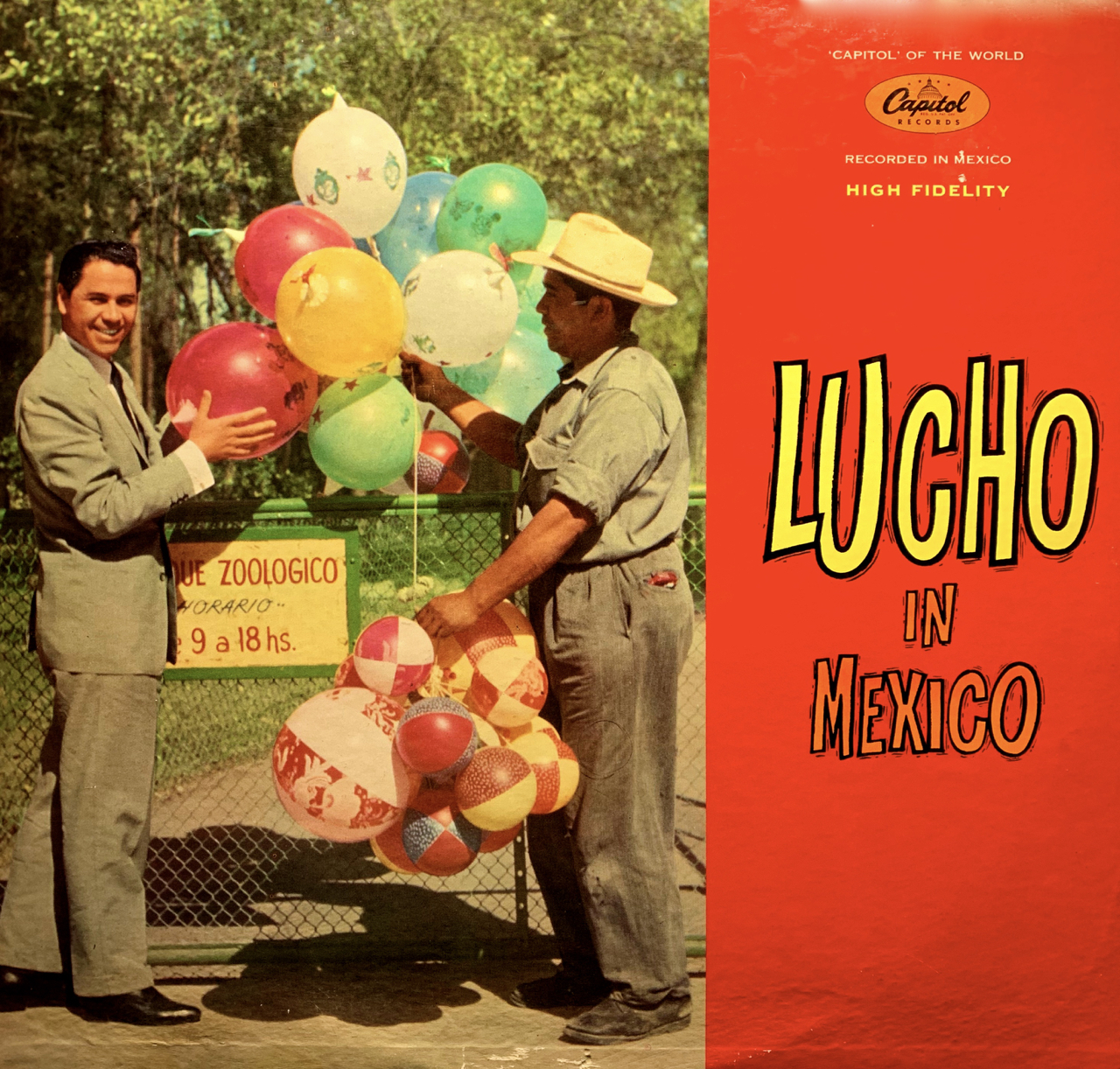 Mid-century Mexico was the hub of the Latin American entertainment industry, a leader in music and film production for the continent. But breaking into that establishment was not easy, especially for an outsider.
Mid-century Mexico was the hub of the Latin American entertainment industry, a leader in music and film production for the continent. But breaking into that establishment was not easy, especially for an outsider.
“Listen, México at that time was an extreme bunker of nationalism,” said Odeon Chile’s artistic director Rubén Nouzeilles, in an interview on a Chilean music website. “Nobody could go there to sing boleros because that was the patrimony of the Mexicans, just as nobody would think of donning a charro hat and go compete with (a mariachi star). Lucho Gatica, apart from being a great artist, was also a conquistador.”
And the conquest was swift. The singer quickly became part of bolero royalty in Mexico. He was soon turning out hit after hit, hosting his own TV show, and making a series of films with Mexico’s biggest stars.
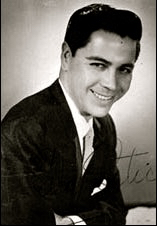 During most of the 20th century, the world of Latin pop music was dominated by a handful of countries – Mexico, Cuba, Argentina, and of course, Spain. But in the 1950s, an exception to that rule became a sensation. His name was Lucho Gatica, and he came from Chile.
During most of the 20th century, the world of Latin pop music was dominated by a handful of countries – Mexico, Cuba, Argentina, and of course, Spain. But in the 1950s, an exception to that rule became a sensation. His name was Lucho Gatica, and he came from Chile.
Gatica emerged from a small town in central Chile to become one of the most popular Latin American vocalists of all time. In a career that spanned 70 years, he sold millions of records around the world, packed theaters and stadiums from Madrid to Manila, starred in movies, and became a celebrity in Hollywood where his friends included Frank Sinatra and Ava Gardner.
 The pantheon of pioneers in conjunto music includes artists who are household names to fans and students of the genre. Among the most recognized are names such as Santiago Jimenez and especially Narciso Martinez, hailed as the father of the conjunto style. Although not as well-known as his celebrated contemporaries, accordion-player Pedro Ayala deserves recognition for his contributions to the early development of this grassroots style during the 1930s and 1940s.
The pantheon of pioneers in conjunto music includes artists who are household names to fans and students of the genre. Among the most recognized are names such as Santiago Jimenez and especially Narciso Martinez, hailed as the father of the conjunto style. Although not as well-known as his celebrated contemporaries, accordion-player Pedro Ayala deserves recognition for his contributions to the early development of this grassroots style during the 1930s and 1940s.
 In 1939, as the Depression was winding down and a new world war was heating up, Lalo Guerrero was still a struggling musician seeking to make his mark. He was newly married and dirt poor, with a son on the way and work hard to come by, keeping the young family on the move from gig to gig.
In 1939, as the Depression was winding down and a new world war was heating up, Lalo Guerrero was still a struggling musician seeking to make his mark. He was newly married and dirt poor, with a son on the way and work hard to come by, keeping the young family on the move from gig to gig.
In his autobiography, Lalo: My Life and Music, Guerrero called this period “our gypsy years.” Yet, the swing-music decade of the 1940s would also bring stardom and some stability to the young performer.
 Lalo Guerrero, the son of immigrants from a poor barrio in Tucson, Arizona, was a pioneering musician whose bilingual songs and bicultural persona earned him the honorary title "The Father of Chicano Music."
Lalo Guerrero, the son of immigrants from a poor barrio in Tucson, Arizona, was a pioneering musician whose bilingual songs and bicultural persona earned him the honorary title "The Father of Chicano Music."
In a career that spanned seven decades, the versatile composer and performer wrote hundreds of songs in an astonishing array of styles, from romantic boleros to folkloric corridos, from comical parodies to rousing protest songs, from mambos to swing, rock, and cha cha chas. He had several international hit songs, appeared in movies alongside major Hollywood stars, operated a landmark nightclub in East L.A., and eventually earned the highest cultural honors awarded to entertainers.
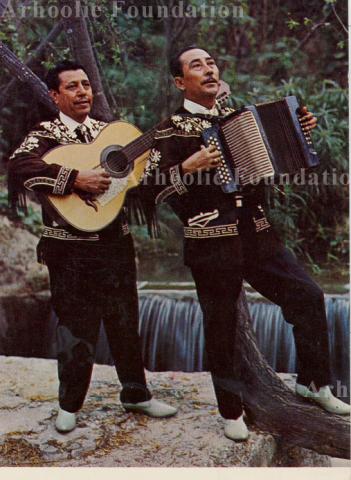 Los Alegres de Terán, a vocal duet founded by a pair of humble migrant workers from northern Mexico, stands as one of the most influential, long-lived and commercially successful regional music acts from the last half of the 20th century. The duo of Tomás Ortiz and Eugenio Ábrego are today remembered as the fathers of modern norteño music, the accordion-based country style that traversed borders as fluidly as its immigrant fans.
Los Alegres de Terán, a vocal duet founded by a pair of humble migrant workers from northern Mexico, stands as one of the most influential, long-lived and commercially successful regional music acts from the last half of the 20th century. The duo of Tomás Ortiz and Eugenio Ábrego are today remembered as the fathers of modern norteño music, the accordion-based country style that traversed borders as fluidly as its immigrant fans.
 Lydia Mendoza (1916-2007) was one the most enduring and highly honored female artists to hail from the immigrant Mexican-American communities of the Southwest United States. Nicknamed “La Alondra De La Frontera” (The Meadowlark of the Borderlands) and “La Cancionera De Los Pobres” (The Songstress of the Poor), the singer-guitarist enjoyed a career that spanned well over half a century, hundreds of recordings, and thousands of personal appearances.
Lydia Mendoza (1916-2007) was one the most enduring and highly honored female artists to hail from the immigrant Mexican-American communities of the Southwest United States. Nicknamed “La Alondra De La Frontera” (The Meadowlark of the Borderlands) and “La Cancionera De Los Pobres” (The Songstress of the Poor), the singer-guitarist enjoyed a career that spanned well over half a century, hundreds of recordings, and thousands of personal appearances.
 There are only a handful of musicians whose careers have encompassed a half century in the evolution of recorded sound, from 78-rpm discs to digital streaming and downloads. One of them is Tito Puente, the versatile bandleader, percussionist, composer, arranger, and vibraphonist. Born in New York of blue-collar Puerto Rican parents, Puente debuted as bandleader during the thrilling mambo era of the 1950s and was actively touring and recording fifty years later, still a star in the new millennium.
There are only a handful of musicians whose careers have encompassed a half century in the evolution of recorded sound, from 78-rpm discs to digital streaming and downloads. One of them is Tito Puente, the versatile bandleader, percussionist, composer, arranger, and vibraphonist. Born in New York of blue-collar Puerto Rican parents, Puente debuted as bandleader during the thrilling mambo era of the 1950s and was actively touring and recording fifty years later, still a star in the new millennium.
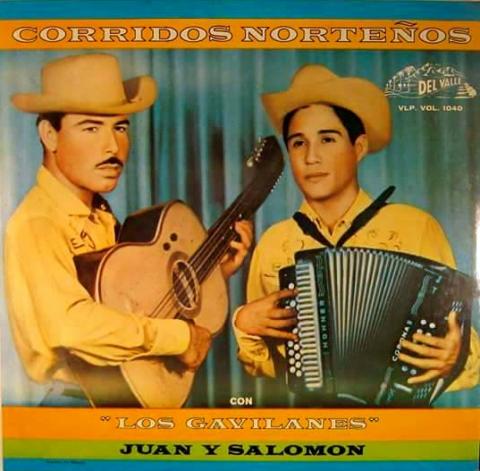 Los Tremendos Gavilanes, the duo of Salomón Prado and Juan Torres, was founded in 1962 at the dawn of the modern age of norteño music. In the 1960s and ’70s, they achieved enormous popularity on both sides of the border and had many imitators, some of whom even usurped their name to try to ride on their coattails. But none could duplicate the magic of these two uniquely compatible musicians and their appealing vocal harmonies.
Los Tremendos Gavilanes, the duo of Salomón Prado and Juan Torres, was founded in 1962 at the dawn of the modern age of norteño music. In the 1960s and ’70s, they achieved enormous popularity on both sides of the border and had many imitators, some of whom even usurped their name to try to ride on their coattails. But none could duplicate the magic of these two uniquely compatible musicians and their appealing vocal harmonies.
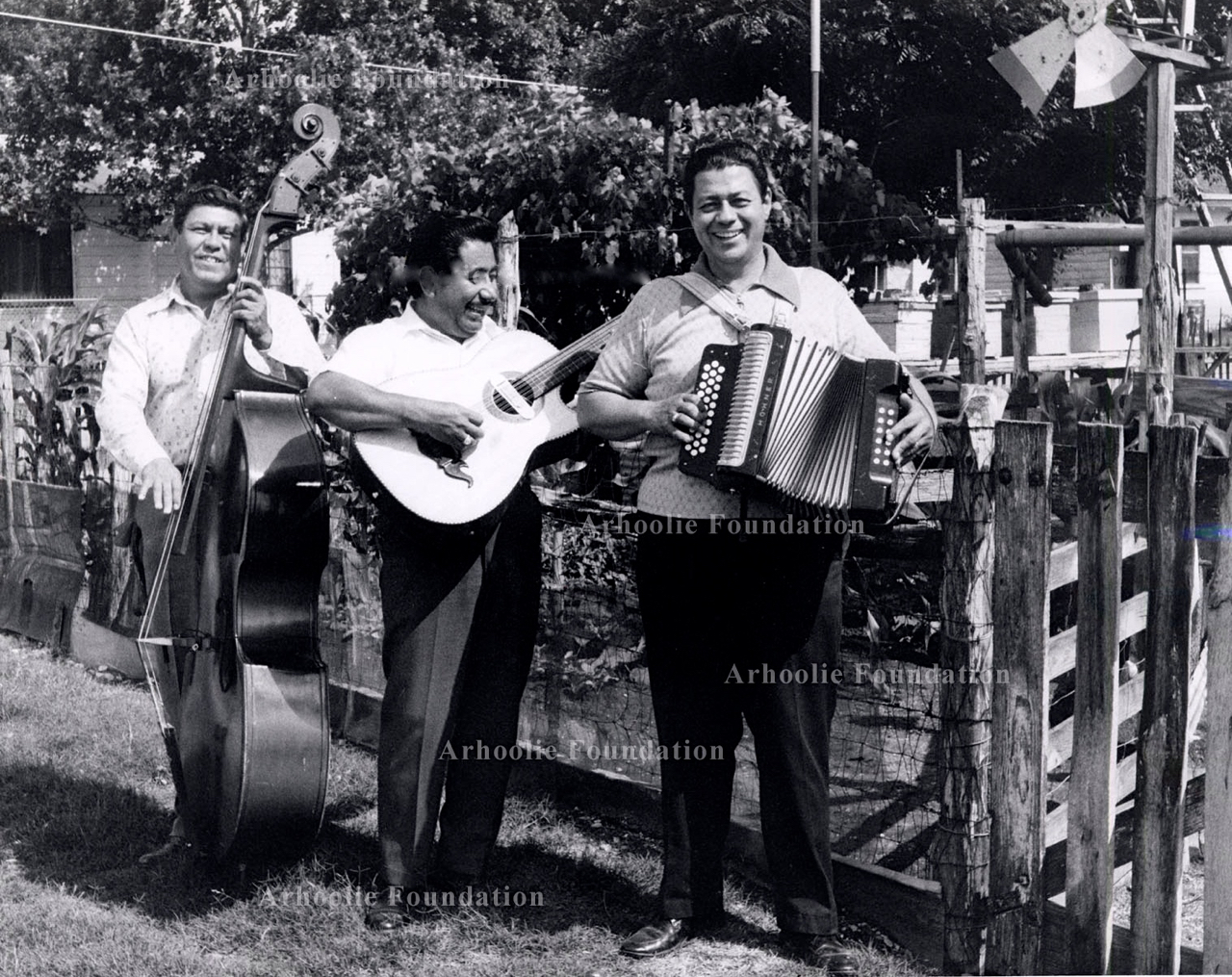 Fred Zimmerle (1931-1998) was born in San Antonio of German and Mexican ancestry, a heritage that embodied the cultural fusion of the border region of South Texas. He became one of the most popular and influential acts in the highly competitive conjunto scene in post-war San Antonio, beloved by fans and respected by peers as a historic figure.
Fred Zimmerle (1931-1998) was born in San Antonio of German and Mexican ancestry, a heritage that embodied the cultural fusion of the border region of South Texas. He became one of the most popular and influential acts in the highly competitive conjunto scene in post-war San Antonio, beloved by fans and respected by peers as a historic figure.
 Santiago Almeida was an exceptional bajo sexto player who gained a historic place in the pantheon of Mexican-American music as the pioneering partner of famed accordionist Narciso Martinez. Together, the duo would shape the style we know today as conjunto music, with the accordion and 12-string guitar as its instrumental core.
Santiago Almeida was an exceptional bajo sexto player who gained a historic place in the pantheon of Mexican-American music as the pioneering partner of famed accordionist Narciso Martinez. Together, the duo would shape the style we know today as conjunto music, with the accordion and 12-string guitar as its instrumental core.
 Los Cadetes de Linares was a popular norteño duo composed in its prime by Homero Guerrero and Lupe Tijerina, both from the town of Linares, Nuevo Leon, south east of Monterrey, Mexico. They were particularly well known for their popular corridos, starting with their first single, “Los Dos Amigos” (The Two Friends), written by Tijerina. Their career together lasted a short eight years, until Guerrero’s untimely death. Yet, they left a lasting legacy through scores of recordings as well as appearances in films that carried the titles of their best-known ballads of outlaw bravado and tragedy, including “Las Tres Tumbas” (The Three Graves), “Cazador de Asesinos” (Hunter of Assassins) and “Pistoleros Famosos” (Famous Gunslingers).
Los Cadetes de Linares was a popular norteño duo composed in its prime by Homero Guerrero and Lupe Tijerina, both from the town of Linares, Nuevo Leon, south east of Monterrey, Mexico. They were particularly well known for their popular corridos, starting with their first single, “Los Dos Amigos” (The Two Friends), written by Tijerina. Their career together lasted a short eight years, until Guerrero’s untimely death. Yet, they left a lasting legacy through scores of recordings as well as appearances in films that carried the titles of their best-known ballads of outlaw bravado and tragedy, including “Las Tres Tumbas” (The Three Graves), “Cazador de Asesinos” (Hunter of Assassins) and “Pistoleros Famosos” (Famous Gunslingers).
 During the Great Depression of the 1930s, Los Madrugadores (The Early Risers) became the most popular group in Mexican-American music in the U.S. The folk ensemble was started by Pedro J. González, a controversial and charismatic personality considered the founder of Spanish-language radio in Los Angeles in the late 1920s. Its name – which comes from “madrugada,” the Spanish word for dawn – refers as much to the band as to its blue-collar audience, those “early risers” who listened to them perform live on the radio from 4 to 6 a.m. as they got ready to go to work. For a group that was marginalized, disdained, and persecuted during the Depression, the moniker also conveyed a certain sense of pride because it carried the connotation of being “hard workers” and “go-getters.”
During the Great Depression of the 1930s, Los Madrugadores (The Early Risers) became the most popular group in Mexican-American music in the U.S. The folk ensemble was started by Pedro J. González, a controversial and charismatic personality considered the founder of Spanish-language radio in Los Angeles in the late 1920s. Its name – which comes from “madrugada,” the Spanish word for dawn – refers as much to the band as to its blue-collar audience, those “early risers” who listened to them perform live on the radio from 4 to 6 a.m. as they got ready to go to work. For a group that was marginalized, disdained, and persecuted during the Depression, the moniker also conveyed a certain sense of pride because it carried the connotation of being “hard workers” and “go-getters.”
 Memo Salamanca was an important composer, arranger, and bandleader who played a prominent role in the popularity of Afro-Cuban dance music that swept Mexico in the 1950s. Salamanca was associated with the leading Cuban artists of the day who had moved to the Mexican capital to ride the mambo craze, including bandleader Perez Prado and venerated Cuban singer Beny Moré.
Memo Salamanca was an important composer, arranger, and bandleader who played a prominent role in the popularity of Afro-Cuban dance music that swept Mexico in the 1950s. Salamanca was associated with the leading Cuban artists of the day who had moved to the Mexican capital to ride the mambo craze, including bandleader Perez Prado and venerated Cuban singer Beny Moré.
Flor Silvestre is a Mexican singer, actress, and equestrienne whose career on stage, screen, and television spans more than seven decades. She is best known to international audiences as part of the rodeo-performing dynasty led by her husband, fellow singer and actor Antonio Aguilar.
Acclaimed for her sensual beauty on screen and her lovely, natural vocals, Silvestre became a sought-after film star during the so-called Golden Age of Mexican cinema in the 1940s. She shared the marquee with top artists of the day, such as María Felix and Miguel Aceves Mejía, and she won fans with her performance of popular rancheras in her films. From the beginning, Silvestre launched a concurrent recording career, making a series of successful albums for three major labels: Columbia Records, RCA Victor, and especially Musart, the Mexican independent.
 Las Hermanas Padilla, sometimes billed as the Andrew Sisters of Mexican music due to their pitch-perfect harmonies, was one of the most popular and prolific Mexican vocal duets of the 1930s and ’40s. Based in Los Angeles, the Padilla sisters, Margarita and María, set a standard for their style of singing boleros and rancheras, becoming among the first internationally successful recording acts to emerge from the Mexican American music scene in Southern California.
Las Hermanas Padilla, sometimes billed as the Andrew Sisters of Mexican music due to their pitch-perfect harmonies, was one of the most popular and prolific Mexican vocal duets of the 1930s and ’40s. Based in Los Angeles, the Padilla sisters, Margarita and María, set a standard for their style of singing boleros and rancheras, becoming among the first internationally successful recording acts to emerge from the Mexican American music scene in Southern California.
Stay informed on our latest news!